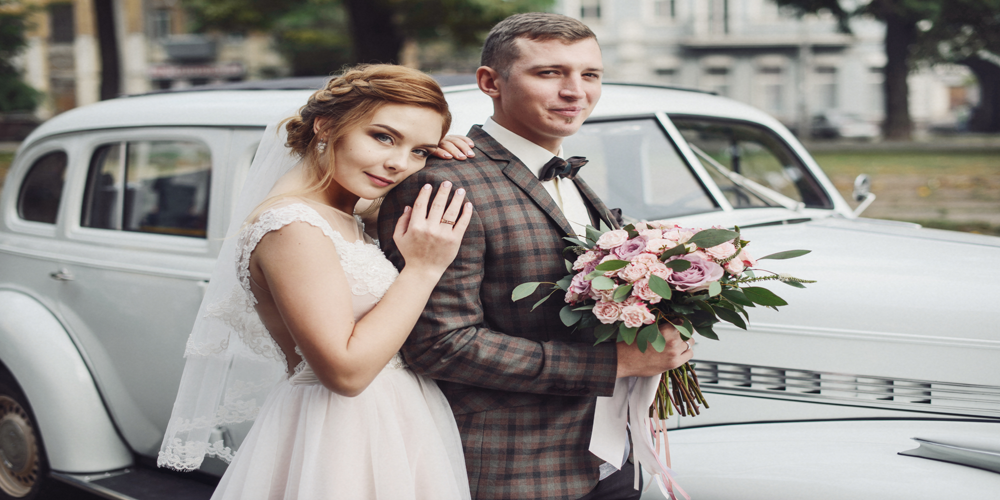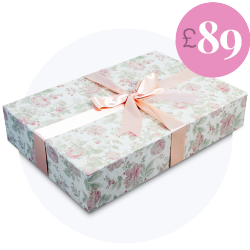Guide to Restoring Vintage Wedding Gowns
Vintage wedding gowns, typically defined as dresses that are at least twenty years old, embody a unique charm and historical significance. These garments often display the craftsmanship, fabrics, and design aesthetics from specific eras, providing a tangible connection to the past. They vary from Edwardian cotton lawn gowns to 1980s puff-sleeved satin dresses, reflecting the evolving bridal fashion trends through the decades.
Popularity and Appeal of Vintage Wedding Dresses
The allure of vintage wedding dresses lies in their timeless elegance and the sense of nostalgia they evoke. Brides are increasingly drawn to vintage gowns for their distinctiveness, romantic history, and superior craftsmanship. Unlike contemporary mass-produced options, vintage dresses often feature intricate hand-stitched details, luxurious fabrics, and unique silhouettes that are difficult to find in modern apparel.
The environmental aspect also adds to the appeal. Choosing a vintage dress is an eco-friendly option, as it promotes the reuse and preservation of garments, reducing the demand for new materials and the environmental footprint of manufacturing processes.
Challenges in Restoring and Preserving Vintage Garments
However, the journey of a vintage wedding dress from discovery to wearable condition is fraught with challenges. The primary issues include:
- Discoloration and Stains: Over time, exposure to light, air, and moisture can cause fabrics to yellow or develop unsightly stains. Addressing these issues requires delicate handling and expert knowledge of fabric-specific cleaning techniques.
- Tears and Structural Damage: Fragile textiles are prone to tears, fraying, and structural weakness. Repairing these damages necessitates meticulous work to ensure that the repairs are seamless and preserve the dress’s integrity.
- Delicate Fabrics and Embellishments: Many vintage gowns incorporate lace, beadwork, and other fragile embellishments that complicate the cleaning and restoration process. Managing these details requires a careful, skilled approach to avoid further damage.
Each vintage wedding gown presents a unique set of challenges, making the restoration and preservation processes as much an art as a science. Proper restoration not only revives the garment’s beauty but also extends its lifespan, allowing it to be cherished by future generations.
By understanding these aspects, one can appreciate the intricate work involved in bringing a vintage wedding gown back to life. This lays the foundation for successfully assessing the condition of these precious garments, a critical step before embarking on their restoration.
Assessing the Condition of a Vintage Wedding Gown
Identifying Common Issues
When evaluating a vintage wedding gown, it is essential to recognise common issues such as discoloration, stains, tears, and structural damage. Common discoloration includes yellowing or browning of the fabric due to age and exposure to air and light. Stains, on the other hand, may originate from spills, perspiration, or even prolonged storage. Tears and holes can occur from fabric weakness or mishandling, while structural damage may include issues with seams, boning, or embellishments.
Evaluating the Fabric and Construction Quality
Assessing the fabric and construction quality demands a meticulous examination. Vintage gowns often feature delicate fabrics such as silk, lace, or tulle, which require careful handling. One must check for fabric integrity, ensuring there are no areas fragile enough to cause further damage during restoration. The gown’s construction, including stitching, seams, and embellishments, must also be scrutinised to determine its original craftsmanship and to identify any weakened areas needing reinforcement.
Determining the Extent of Restoration Needed
Once the gown’s condition is thoroughly assessed, the next step is to determine the extent of restoration required. This involves prioritising repairs based on severity. Address immediate structural issues such as major tears or structural damage first to prevent further degradation. Stains and discolorations follow, as these can be treated with appropriate cleaning techniques to restore the gown’s original beauty.
A careful, detailed assessment not only ensures the gown’s integrity but also guides the restoration process, making it efficient and effective. By understanding the vintage gown’s condition, one can plan a tailored restoration strategy, bringing the gown back to its former glory while preserving its historical value.
Ultimately, understanding the gown’s unique needs guides the restoration method chosen, ensuring the vintage charm is preserved for years to come.
Cleaning Vintage Wedding Gowns
Importance of Proper Cleaning Techniques
Proper cleaning techniques are essential when restoring vintage wedding gowns to ensure their delicacy, fabric integrity, and historical value are preserved. Without appropriate care, cleaning processes can easily cause irreversible damage, rendering the garment unusable. Thus, understanding the unique needs of these intricate and fragile dresses is paramount.
Dry Cleaning vs. Wet Cleaning Methods
Deciding between dry cleaning and wet cleaning methods depends on the specific requirements of the gown.
- Dry Cleaning: Often favoured for vintage garments due to its gentle handling, dry cleaning uses chemical solvents to remove stains and dirt without immersing the fabric in water. This method is particularly suitable for dresses with delicate fabrics and embellishments, such as silk or wool, that might be harmed by water exposure. However, care must be taken to select a dry cleaner experienced with vintage textiles to avoid any potential mishandling.
- Wet Cleaning: Although less common, wet cleaning may be necessary for certain fabrics or heavily soiled gowns. This method employs water and special cleaning agents to remove dirt and stains. It’s vital to use cold water and mild detergents to prevent fabric shrinkage or colour bleeding. Professional expertise is crucial here to ensure that only the safest products are used and that the gown is adequately supported and protected throughout the process.
Special Considerations for Delicate Fabrics and Embellishments
When cleaning vintage wedding gowns, special considerations must be made for delicate fabrics and embellishments.
- Delicate Fabrics: Fabrics such as lace, tulle, and silk require gentle handling. It’s imperative to avoid abrasive actions that could cause rips or fraying. Each fabric type has its own cleaning and drying requirements, necessitating a personalised approach.
- Embellishments: Beads, sequins, and embroidery are particularly vulnerable during cleaning. Many of these elements are attached with threads that might weaken over time. To safeguard embellishments, covering them with protective netting or using spot-cleaning techniques to focus on specific areas without subjecting the entire gown to potential damage is recommended.
By adhering to these techniques, one can extend the life of a vintage wedding gown while preserving its beauty and historical significance. The next step in this meticulous restoration process involves addressing discoloration and stains, ensuring that every issue is carefully managed with the utmost precision.
Addressing Discoloration and Stains
Common Causes of Discoloration in Vintage Garments
Discoloration in vintage wedding gowns is often the result of several factors. Exposure to light, particularly ultraviolet (UV) rays, can cause fabrics to yellow over time. Additionally, oxidisation due to contact with air or improper storage can lead to similar yellowing or browning effects. Organic stains such as sweat, body oils, and perfume residues contribute to gradual discolouration. Chemical residues from past cleanings may also remain embedded in the fibres, leading to further degradation of the fabric’s appearance.
Techniques for Removing Various Types of Stains
Addressing stains on vintage wedding gowns requires a nuanced approach, depending on the nature and severity of the stain.
- Surface Dirt and Dust: These can often be gently removed using a soft-bristled brush or a vacuum with a low suction setting.
- Oil-based Stains: For grease and oil-based stains, applying a small amount of solvent-based cleaner on a white cotton cloth can help. Dabbing rather than rubbing ensures that the stain is lifted rather than pushed deeper into the fabric.
- Water-based Stains: Substances like wine, tea, or food are typically best treated with a solution of distilled water and mild detergent. Blotting the area carefully with a white cloth can help avoid spreading the stain.
- Protein-based Stains: For stains like sweat and blood, an enzymatic cleaner may be beneficial. These are specifically designed to break down protein molecules.
Restoring Original Colour and Brightness
Once stains are addressed, it’s essential to restore the gown’s original colour and brightness. This step often involves a mild bleaching process, carefully controlled to avoid fabric damage. Oxygen-based bleaches are preferred for their gentleness on delicate fabrics. Additionally, professional-grade whitening agents can be used to revive the fabric’s original shade.
For gowns that have lost their lustre due to age, a special treatment bath can reinvigorate the fibres, bringing back the fabric’s inherent brightness. This process is typically carried out by soaking the gown in a solution that revitalises the material, followed by a thorough rinse to ensure no residues are left behind.
Proper techniques in addressing discolouration and stains not only restore a gown’s original beauty but also extend its longevity, representing an essential step towards effective preservation.
Properly repairing physical damages enhances the aesthetic restoration, ensuring the structural integrity of these cherished heirlooms.
Repairing Tears and Holes
Assessment of Damage and Appropriate Repair Methods
Before diving into the specifics of mending tears and patching holes, it is crucial to assess the damage properly. This initial step helps in determining the most suitable repair techniques. Assess the location, size, and nature of the tear or hole.
- Examine the fibres around the damaged area for signs of weakening.
- Check if the tear or hole is along a seam or on the main body of the gown.
- Identify any other associated damages, such as missing beads, fraying edges, or stretched fabric.
By understanding these aspects, you can decide on the most appropriate repair methods, ensuring the longevity and visual coherence of the gown.
Techniques for Mending Tears and Patching Holes
Different types of damage require targeted repair techniques. Below are some effective methods:
- Hand Stitching: This technique is ideal for minor tears and is often performed using a fine needle and matching thread. The goal is to make small, even stitches that blend seamlessly into the existing fabric.
- Invisible Mending: For more severe tears, invisible mending, which involves reweaving the fabric fibres, is recommended. This skilled technique requires patience and precision but results in repairs that are nearly undetectable.
- Patch Reinforcement: When dealing with larger holes, it may be necessary to introduce a patch. Use a piece of matching fabric, ideally taken from a less noticeable area of the gown, to create a patch that fits perfectly over the damaged area. Stitch the edges securely while ensuring the patch lies flat.
Matching Fabrics and Thread for Seamless Repairs
Achieving a cohesive look in repaired sections depends largely on selecting appropriate fabrics and threads. Below are key considerations:
- Fabric Matching: If the original fabric is unavailable, find a substitute that matches in both texture and weight. Silk organza, chiffon, or lace are common materials in vintage gowns and must be replaced with similar fabrics.
- Thread Matching: Choose a thread that matches the gown’s original colour. When in doubt, slightly lighter shades are easier to blend than darker ones. Fine threads tend to blend better and create more discreet repairs.
These meticulous repair methods ensure the vintage wedding gown retains its historical integrity and aesthetic charm while safeguarding it for future use.
Ensuring seamless repairs now will ease the transition into structural fixes, reinforcing your gown’s durability and overall appearance.
Fixing Structural Damage
Reinforcing Weakened Seams and Closures
The structural integrity of a vintage wedding gown is paramount. Time can compromise the strength of seams and closures, often necessitating careful reinforcement to ensure the garment can be worn without issue. Begin by examining all seams for signs of weakness or fraying. Where necessary, reinforce these areas with hand stitching, using a technique that matches the original construction as closely as possible. For closures such as hooks, eyes, and loops, ensure they are securely attached and replace any that show significant wear.
For stressed seams, a double-threaded backstitch provides robust reinforcement. This method evenly distributes tension across the seam, reducing the likelihood of future damage. Use silk or cotton thread in a matching colour to maintain the gown’s continuity and aesthetics.
Rebuilding Damaged Boning or Support Structures
Boning and other support structures in vintage wedding gowns can degrade over time, potentially distorting the garment’s silhouette. Carefully assess the condition of these components. If the boning is compromised, gently remove and replace it with similar materials—modern plastic boning can be a suitable alternative to the typically used whalebone or steel in earlier eras.
Should support structures be entirely missing or beyond repair, reconstruct them based on historical design references. Ensure new boning or supports are encased in durable fabric channels sewn cautiously to avoid damaging the delicate main fabric. This step is vital for restoring the gown’s intended shape and structural elegance.
Addressing Issues with Zippers, Buttons, and Other Fastenings
Fastenings such as zippers, buttons, and clasps are critical for the practical use of vintage wedding gowns. Begin by inspecting each fastening for signs of wear, rust, or missing parts. Replace rusted zippers with period-appropriate alternatives, or use a similar modern substitute that complements the gown’s style.
For buttons, source replacements that match the originals in terms of material, size, and appearance. Vintage button collections or specialist suppliers can be invaluable for finding these matching elements. When reattaching buttons, reinforce the backing with a small piece of fabric for added stability.
Clasps and hooks may require similar attention. Ensure they are securely fastened and replace any that no longer function efficiently. Applying these meticulous and respectful approaches preserves not only the functionality but also the historical and aesthetic integrity of the vintage wedding gown.
As structural repairs conclude, it’s essential to transition into the broader context of long-term care. Proper storage and environmental controls will sustain the gown’s renewed strength and beauty over time.
Preserving Restored Vintage Wedding Gowns
Proper Storage Techniques to Prevent Future Damage
Preserving the brilliance of a meticulously restored vintage wedding gown begins with appropriate storage. The gown should be stored in a cool, dry environment, away from direct sunlight to prevent fading and deterioration of delicate fabrics. Utilising acid-free tissue paper to wrap the gown helps in maintaining its colour and texture while avoiding chemical reactions that could compromise the fabric. The gown should ideally be stored flat in a large, acid-free box to alleviate stress on seams and embellishments. Padded hangers wrapped in muslin are an alternative for those preferring to hang the gown, but be sure to support the skirt with additional fabric to avoid strain on the shoulders.
Environmental Controls for Long-Term Preservation
Maintaining an optimal environment is critical for the long-term preservation of vintage wedding gowns. Temperature and humidity control are paramount; excessive moisture can lead to mildew, while extreme dryness can cause brittle fabrics. The ideal conditions include a stable temperature of around 65°F (18°C) and a relative humidity of 50%. Use silica gel packets to absorb excess moisture and ensure proper air circulation within the storage area. Regular monitoring with hygrometers and thermometer devices is recommended to maintain these conditions consistently.
Periodic Maintenance and Inspection Recommendations
To ensure that the gown remains in pristine condition, it is essential to incorporate periodic maintenance and inspection routines. Every six months, inspect the gown for signs of damage, pests, or mildew. Look specifically at seams, embellishments, and any areas of previous restoration. Re-wrap the gown in fresh acid-free tissue paper and rotate its position to prevent permanent creases. Should any damage be detected, immediate professional intervention is recommended to address issues before they escalate.
Regular maintenance and environmental controls are instrumental in preserving the gown’s integrity, ensuring that it can be admired and cherished for many years to come.
Bringing New Life to Vintage Wedding Gowns
Recap of Key Restoration and Preservation Techniques
Restoring vintage wedding gowns is a meticulous craft, rooted in preserving both the aesthetic and historical integrity of these cherished garments. Successful restoration begins with an astute assessment of the gown’s condition, identifying issues such as discoloration, stains, tears, and structural damage. This initial step lays the groundwork for an appropriate restoration plan.
Effective cleaning techniques, whether through dry or wet methods, are paramount. Each type of fabric and embellishment demands a tailored approach to prevent further deterioration. Addressing discoloration and stains through suitable solvents and gentle treatments ensures that the gown regains its original vibrancy without compromising its delicacy.
Repairing tears and holes requires expert mending and the careful selection of matching fabrics and threads. Techniques such as hand stitching and invisible mending help maintain the gown’s seamless look. Fixing structural damage involves reinforcing weakened seams, reconstructing boning, and ensuring all closures like zippers and buttons are functional and authentic to the gown’s era.
Finally, preserving a restored vintage wedding gown calls for precise storage methods, using acid-free tissue paper, flat storage or padded hangers, and maintaining a controlled environment. Periodic inspections are necessary to monitor the gown’s condition and address any emerging issues promptly.
Importance of Professional Expertise for Complex Restorations
Restoring a vintage wedding gown to its former splendour often requires professional expertise. Specialists in textile conservation bring invaluable knowledge of historical fabrics and techniques, ensuring accurate and faithful restorations. Their proficiency in handling delicate materials and intricate embellishments makes them indispensable for complex repairs that go beyond amateur efforts. By entrusting a professional, the gown’s structural integrity and aesthetic essence are preserved, nurturing its longevity as a treasured heirloom.
Celebrating the Timeless Beauty of Vintage Wedding Gowns
Reviving vintage wedding gowns is not merely about restoration; it’s about celebrating the timeless beauty and historical storytelling each gown encapsulates. These garments, often handed down through generations, carry deep sentimental value and unique charm. Preserving them doesn’t just uphold a piece of personal history; it becomes a tribute to the enduring elegance and craftsmanship of bygone eras.
Through diligent restoration and preservation efforts, vintage wedding gowns continue to enchant and inspire, bridging past legacies with present moments. By breathing new life into these garments, we honour their intricate artistry and ensure their storied existence endures for future generations to admire and cherish.










